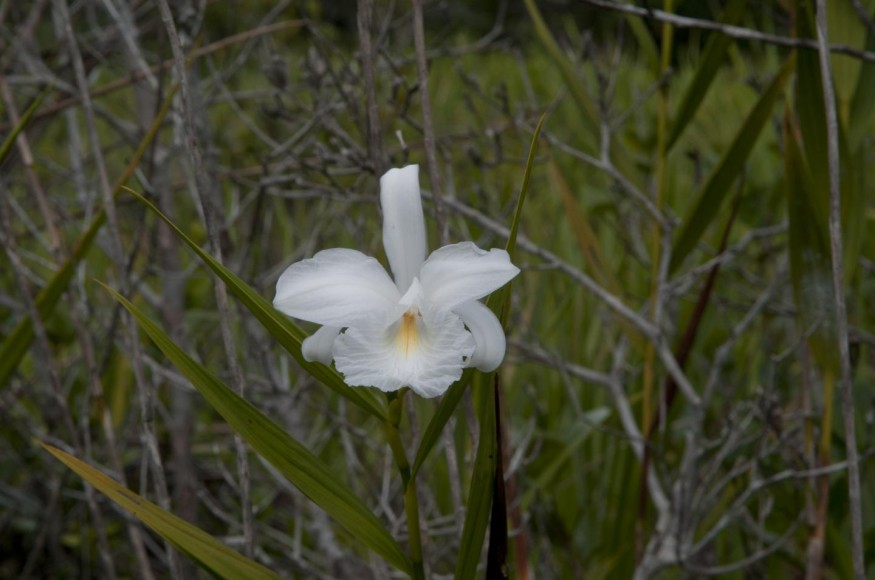
Brazil contains the largest expanse of tropical ecosystems within protected areas, but a significant proportion of these reserves may be vulnerable to the effects of ongoing global climate change, according to a study supported by São Paulo Research Foundation - FAPESP and published in the journal Conservation Biology.
The study analyzed the vulnerability to climate change of 993 protected areas throughout Brazil, covering all areas of more than 50 square kilometers (km²), including national parks, ecological stations, sustainable development reserves, and indigenous territories demarcated by the National Foundation for Native Peoples (FUNAI).
The principal investigator of the study was David Montenegro Lapola, a researcher at the University of Campinas's Center for Meteorological and Climate Research Applied to Agriculture (CEPAGRI-UNICAMP) in São Paulo State. The research began during the scientific initiation of Fernanda Sueko Ogawa with a scholarship from FAPESP (https://bv.fapesp.br/en/bolsas/136374/analysis-of-climate-change-projections-from-the-ipcc-fifth-report-inside-brazilian-protected-areas/).
The researchers estimated the resilience of these protected areas and compared the results with climate change projections based on indicators provided by government agencies and previous studies. Of the 993 areas analyzed, 258 were classified as having "medium vulnerability", and 17 were found to be "highly vulnerable" to climate change.
Methodology
The climate change projections used for the study were based mainly on the regional climate change index (RCCI) developed in 2012 by Brazil's National Space Research Institute (INPE), a federal government agency. The likely impact of climate change and local adaptation capacity (resilience) were gauged on the basis of data on native vegetation integrity in and around protected areas as well as level of isolation and size.
Estimates of climate-related environmental hazards produced by previous studies were also considered. "For example, extreme climate change could transform vegetation in the Amazon into Cerrado [Brazilian savanna], while the Pampa [grasslands in the south of Brazil and in parts of Argentina and Uruguay] could become forest," Lapola said.
The climate change projections and hazard assessments were combined with resilience indicators to arrive at the vulnerability classifications. "The classifications are the novelty of this study, enabling us to suggest the strategy best suited to each area," Lapola said.
The 17 areas classified as displaying high vulnerability to climate change along with low resilience total 20,611 km² and are located in the following biomes: Atlantic Rainforest (7), Cerrado (6), and Amazon (4). The 258 areas with medium vulnerability were considered moderate in terms of both hazard and resilience.
Areas of native vegetation totaling more than 750,000 km² may be at risk in the coming decades.
Impacts
Protected areas are important to mitigate the impacts of climate change. "They represent a large carbon store and maintain ecosystems by preserving pollinators, water resources, and services associated with our basic needs and food security," said biologist Carlos Joly, a member of the steering committee for the FAPESP Research Program on Biodiversity Characterization, Conservation, Restoration and Sustainable Use (BIOTA-FAPESP) and a coauthor of the study.
On the other hand, the expected variations in temperature and rainfall in the years ahead may affect these areas, as shown by the Brazilian study, the first to produce an analysis focusing on conservation units.
"Research has shown that these changes can affect the distribution of tree species and the survival of certain animal species," Joly noted.
In addition to their crucial importance to biodiversity, many of these areas are inhabited by traditional populations - indigenous tribes, coastal fishing communities (caiçaras), river dwellers (ribeirinhos) and peasant farmers. More than 80% of the areas classified by the study as highly or moderately vulnerable are indigenous reservations. "This point merits special attention, given the lack of discussion about how these populations can or should manage and adapt to climate change so that they and their way of life can continue to exist," Lapola said.
© 2025 NatureWorldNews.com All rights reserved. Do not reproduce without permission.





